SaGa Emerald Beyond, out earlier this year, was the quintessential SaGa experience. That game felt like the culmination of decades of experimentation, refinement, and the consistency of its creative team. Romancing SaGa 2: Revenge of the Seven, a full remake of the 1993 Super Famicom RPG, is something different. Led by the team behind 2020’s Trials of Mana remake, this project is more about making something new with a niche classic as the blueprint. While Emerald Beyond was as hardcore as it gets, Revenge of the Seven is an exercise in maximizing approachability. I had my reservations, but the modern conveniences brought to the table with this remake hit their target without compromising the systems that made the original game so great.
A generational conflict
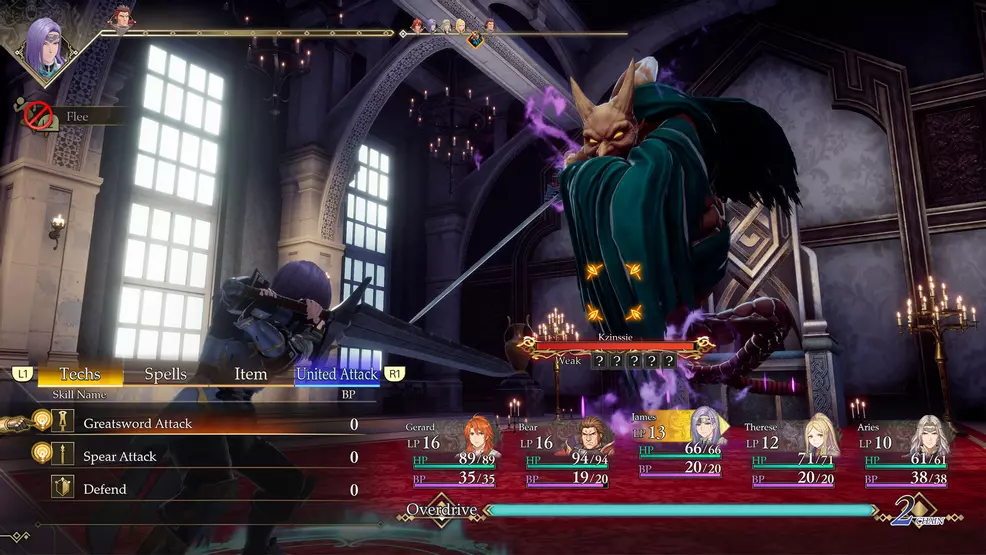
Avalon, led by emperor Leon and his two sons, is in trouble. The Seven Heroes, named as such after their efforts to save the world from an existential threat, have returned after being sealed away for mysterious reasons. With their return has come an increase in monster activity, natural disasters, so on and so forth. While Victor is strong and capable, Leon has been taking his weaker, nerdier son Gerard out on expeditions to both help the empire and build the kid up a bit. But when one of the Seven Heroes reveals themselves, it becomes clear there’s a gulf in power Avalon has no chance of weathering.
Leon comes to understand a power called Inheritance Magic, which becomes the governing structure of Romancing SaGa 2. As the current emperor passes on, they are able to transfer their memories, experiences, and abilities to the next generation. When Gerard is forced to take the throne, this magic immediately remedies his biggest flaws, and allows him to become a capable leader. But that’s still not enough. Over the course of the game and hundreds of years, the conflict between Avalon and the Seven Heroes escalates and transforms until the final showdown has more at stake than previously imagined.
The most complicated family tree ever
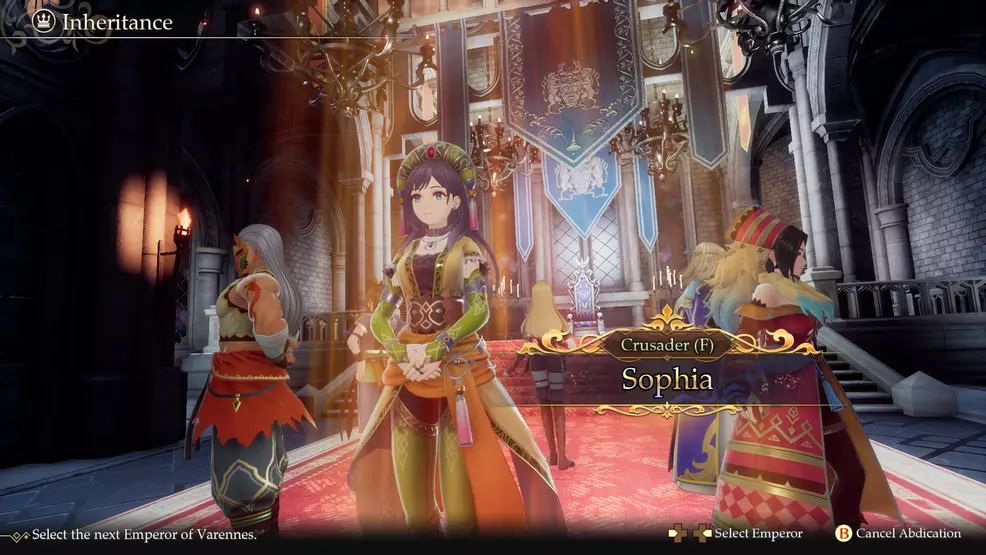
The Inheritance system is Romancing SaGa 2’s backbone, but each smaller piece of character progression and party building forms a complete skeleton that’s gratifying to engage with over dozens of hours. That’s the secret sauce SaGa has, and the team behind this remake understood the assignment. Characters don't just earn EXP and level up after battles, they grow based on their participation in battle. Depending on the weapons, spells, and skills they use, they grow stronger in those areas. This progression system pops off with “Glimmers,” a literal light bulb moment a character has when they learn something new. There’s nothing like an intense battle being interrupted by a spark of inspiration, giving a character a powerful, new technique that brings their toolset to the next level.
Building a pool of tools is a massive part of Romancing SaGa 2, and something that will gradually happen nearly the entire adventure. From unlocking new character classes as a reward for completing side quests to finding new magical spells in lost books, there’s always something around the corner that can alter your gameplan or what feels like the trajectory you’re on for a “main” party. New features not in the original game such as passive Abilities you can unlock from each class then swap upon mastery bring in even more elements of customization you can tinker with, and no one element feels overly complicated or undercooked. Everything you can accomplish feeds into making your squad more versatile and powerful, and looking back at what you’ve built at the end is a prideful payoff.
I was here before SaGa was cool (I hope it’s cool now though)
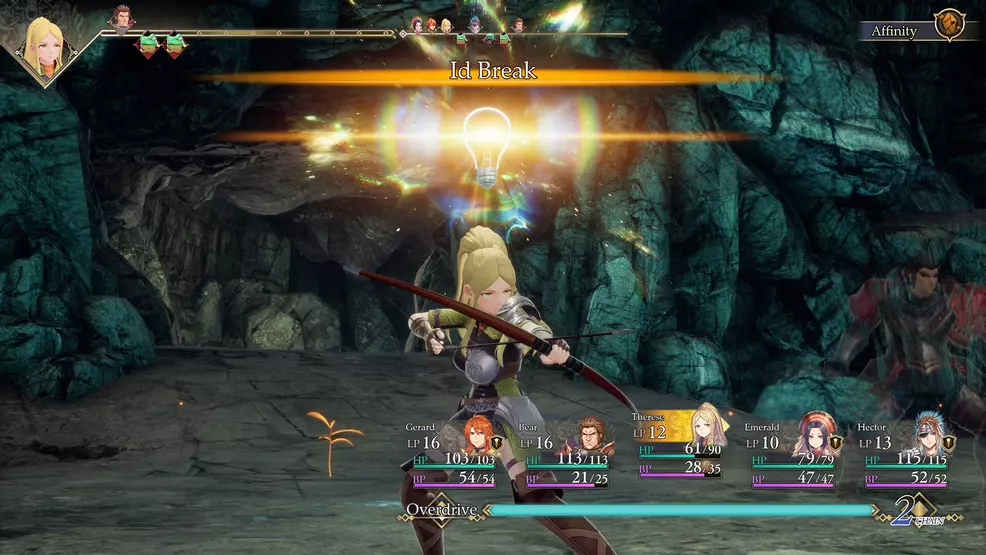
My biggest point of contention with Revenge of the Seven was something that came up when I interviewed the game’s producer ahead of this review. SaGa games have a reputation for being unkind to the player, generally by obscuring information from them and asking them to figure things out. Romancing SaGa as a trilogy was perhaps the most notorious in this regard, especially the first two. Even the remasters from a few years ago didn’t tell you how anything worked, and the sicko section of the fanbase (myself included) actually enjoys that endeavor of discovery.
This remake lays out almost every detail for every system, to the point that the pause menu (which gives Atlus a run for its money in terms of cool UI) is full of stuff to click on. Someone like me never needed to linger anywhere, but for newcomers and folks who love to min/max, all Romancing SaGa 2’s secrets are now out in the open. I was worried something special would be lost in the attempt to make things more friendly, especially when it comes to the game’s Free Scenario System. With waypoints everywhere telling you where to go to advance the story or kick off side quests, what would happen to the emergent novelty of self-discovery?
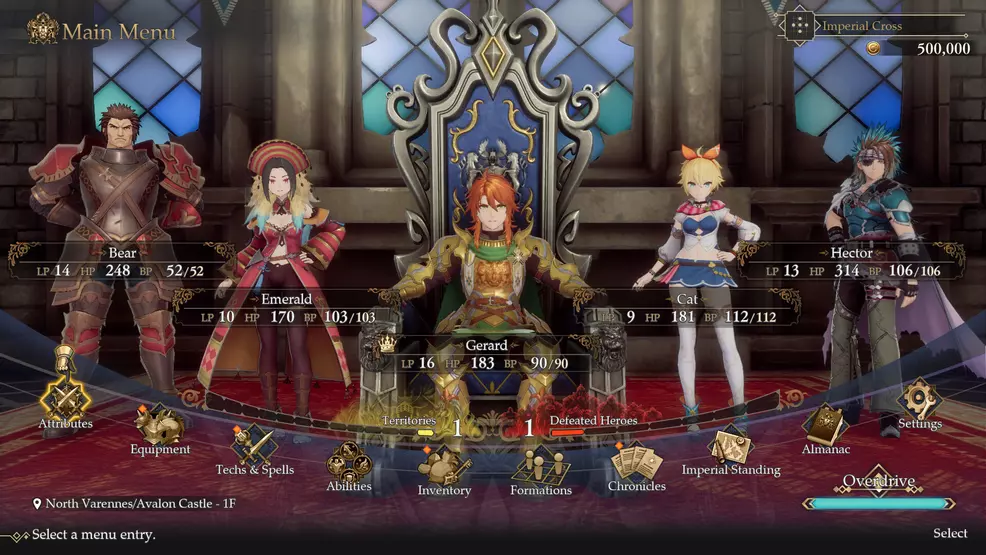
Some of that was indeed lost. Whenever a new quest was available, I knew where to go and who to talk to without having to think about it. It was never truly a surprise to know when a new tech Glimmer was on the way. Stat increases were a matter of watching meters fill up. As a SaGa enthusiast I initially felt a little disappointed that some of the series’ unique elements were being smoothed out. But it wasn’t all bad news. There were still some crucial points left obscured, such as the exact moments accomplishing a goal would cause a generational shift to occur. Certain quests (such as my favorite side story involving a mermaid) were offered more clearly, but still had secret outcomes that extended past the “completed” checkmark.
Meanwhile, the brain energy I didn’t have to use for the original’s deliberate obfuscation could be pointed back towards mastering the systems and character building aspects of the game, which I enjoy just as much as the hardcore stuff. So after an adjustment period, I found myself appreciating that SaGa still felt like SaGa, even if it wasn’t being as mean to me.
More RPGs like this, please
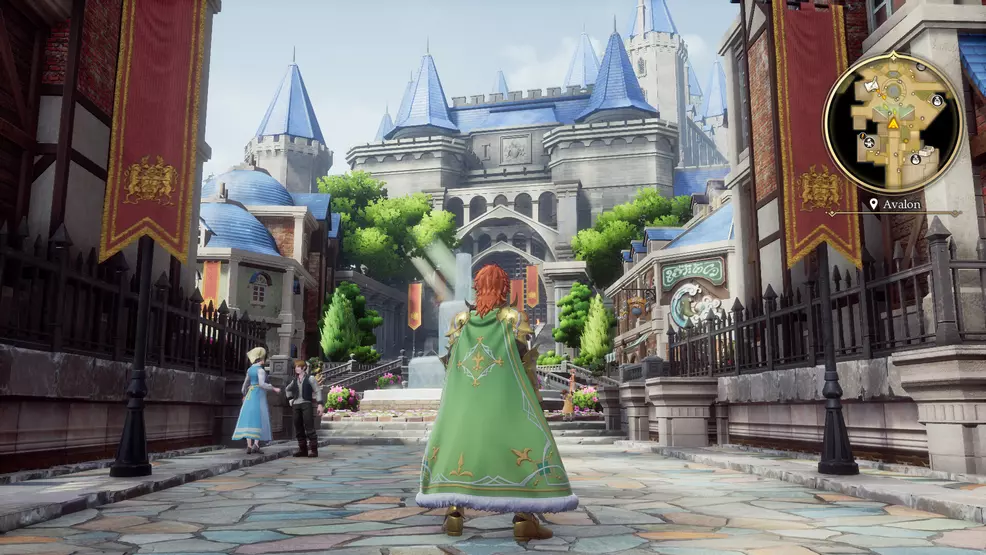
For a long time, part of SaGa’s unique vibe has been its unconventional visuals and/or presentation. Especially recently, these games have been about boiling down the excess and presenting a pure, tabletop-style RPG experience. That means things like running around large, sweeping environments, looking out across sweeping, cliffside vistas, and opening treasure chests in winding dungeons weren’t part of the equation. For the remake, Romancing SaGa 2 is a bigger version of its old self, which was on its face a traditional, Super Famicom RPG. There are towns, dungeons, treasures, all the stuff the series has moved away from since.
It isn’t quite a blockbuster on the AAA level, but man, Revenge of the Seven is a fantastic-looking game. It uses every bit of space to its maximum effectiveness, from the main hub of Avalon to basic caves housing goblins and evil rabbit-creatures. In a world that sees the massive juggernauts like Final Fantasy struggling to recoup their massive budgets, I found myself thinking a new flagship RPG from Square Enix could totally look closer to this and still get away with being called Final Fantasy. Of course it helps that Kenji Ito is a legendary composer and coming back to his old work is simply an excuse to cook further, but if anyone calls this title “low budget” I’ll be raising both my eyebrows to say the least.
As one of games media’s self-described SaGa Sickos, I had one question on my mind coming into Romancing SaGa 2: Revenge of the Seven. Could a SaGa be rebuilt, explicitly for approachability, and still feel like SaGa? Or would sanding it down and making it friendlier turn it into a less daring and bold RPG that’s harder to distinguish from Final Fantasy or Dragon Quest? While some parts did have me feeling a little curmudgeonly, at the end of the day the answer is yes. Romancing SaGa 2’s remake is a fulfilling journey, giving fans of the original plenty to sink their teeth into, while simultaneously offering something that’s a lot more palatable for curious parties to finally set their fears aside and try something new. If it clicks, though, I implore you to dive into the deep end afterwards. Don't sleep on SaGa!
Romancing SaGa 2: Revenge of the Seven is available on October 24, 2024 for the PC, Nintendo Switch, and PlayStation 4 and 5. A PC code was provided by the publisher for this review.
Romancing SaGa 2: Revenge of the Seven
- Tons of gratifying character-building systems
- Lots of effort put into making the game approachable and easier to dive into
- Certain tricky elements are still in place despite the streamlining
- Lacks the hardcore sense of surprise and discovery the original had
-
Lucas White posted a new article, Romancing SaGa 2: Revenge of the Seven review: A SaGa for everyone
-
Your blog always provides a refreshing perspective. I appreciate the depth and effort you put into each post. Keep inspiring us!
Also, I would like to share an informative resource with you that i found on the internet here is the link to that resource https://www.904homebuyer.com/sell/jacksonville-beach-fl -
Nice review. Agree some of the quality of life additions & modernizations take away some of the R SaGa2 mysteries and surprises. The battle system upgrade is welcome though. On the hard/"original" setting it's still challenging, but some great elements are carried over from Scarlet Grace systems. For example using stun or sleep followed by paralyze works like a charm and it's possible to control difficult battles except when elementals or un-deads are present.
Overall really fun to play especially nice to replay it in a new format compared to the original.



